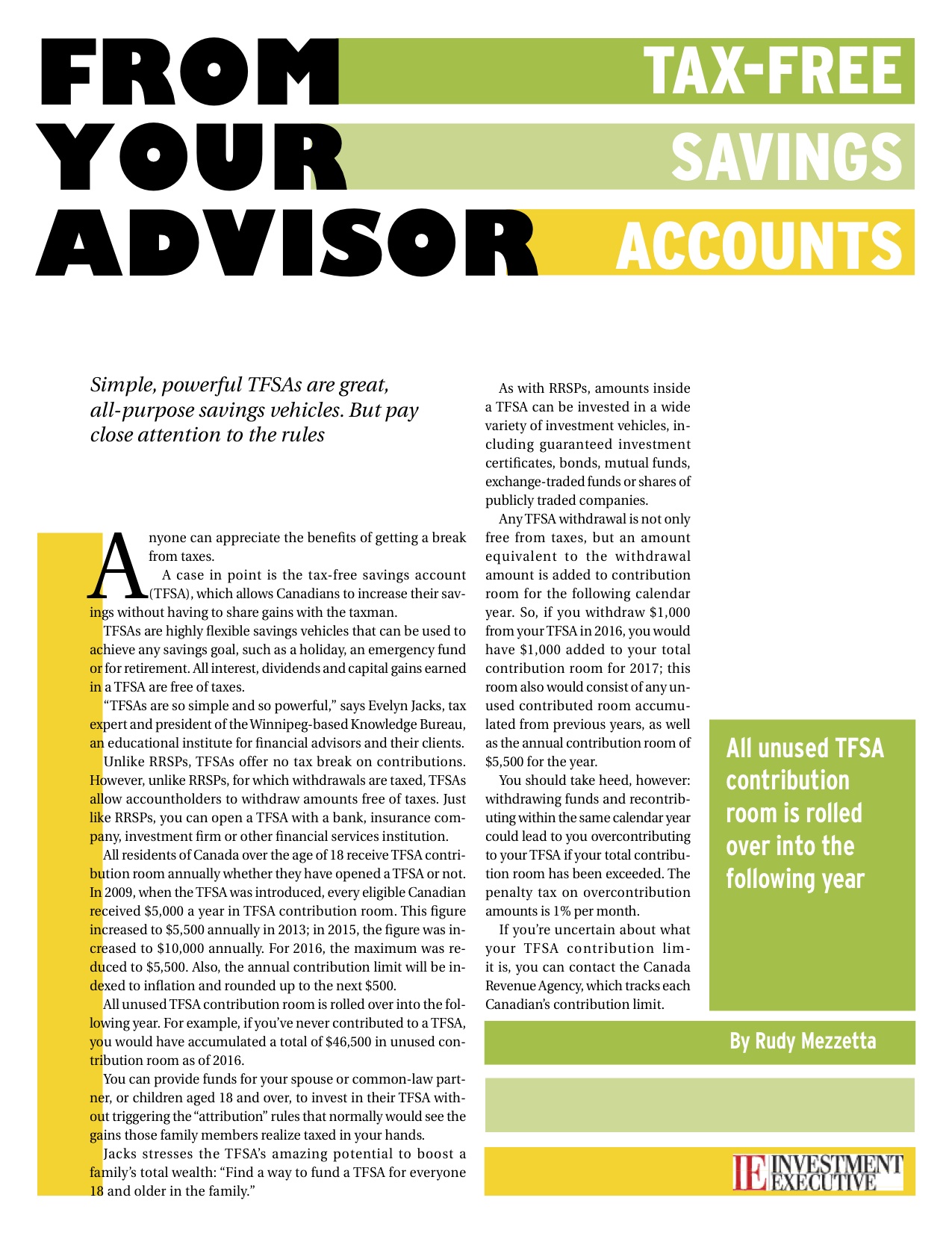Respondents estimate they would contribute an average of $4,325 this year
Contributions to TFSAs are rising while contributions to RRSPs are dropping as more Canadians understand the differences between the two investment vehicles
Some clients still are unclear about the rules regarding contribution limits, withdrawals and penalties
Excluding TFSAs from CRS reporting requirements better aligns CRS rules with those already in place for FATCA, making it easier for Canadian financial services firms
Clients can designate three main types of beneficiaries for their TFSAs: a successor holder a named beneficiary or an estate. Each type is subject to different taxation and transfer rules

TFSAs are among the most useful investment and tax-planning tools
With the TFSA having become a worthwhile option for your clients, it’s time to consider whether an RRSP has the same allure as it once did for certain investors

Less than a quarter of Canadians are aware of the annual contribution limit of $5,500 and that there is a monthly penalty for overcontributing

Remind your clients of other tax savings options and strategies, including maximizing RRSPs and other registered accounts

A new OSFI report also finds that the use of registered pension plans dropped, in percentage terms, during the past 10 years